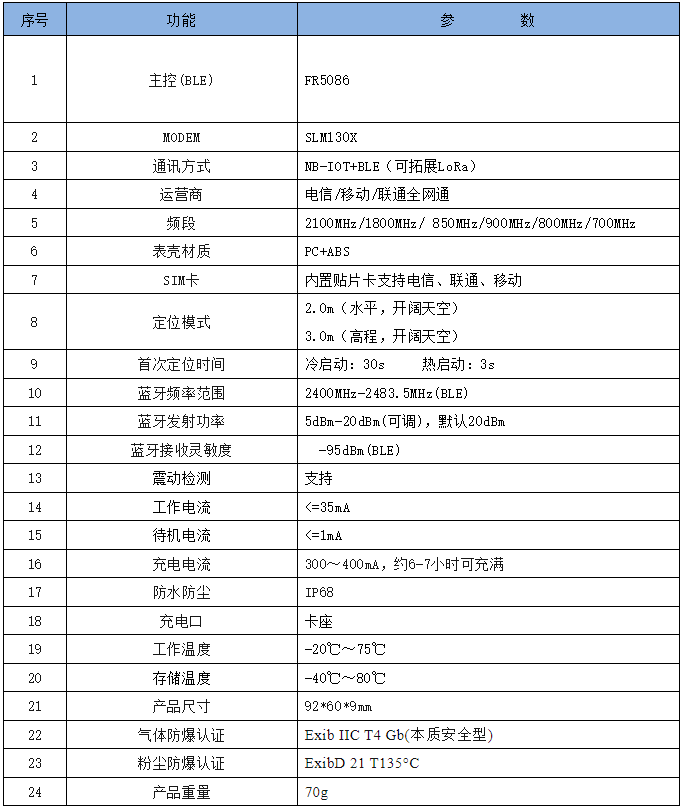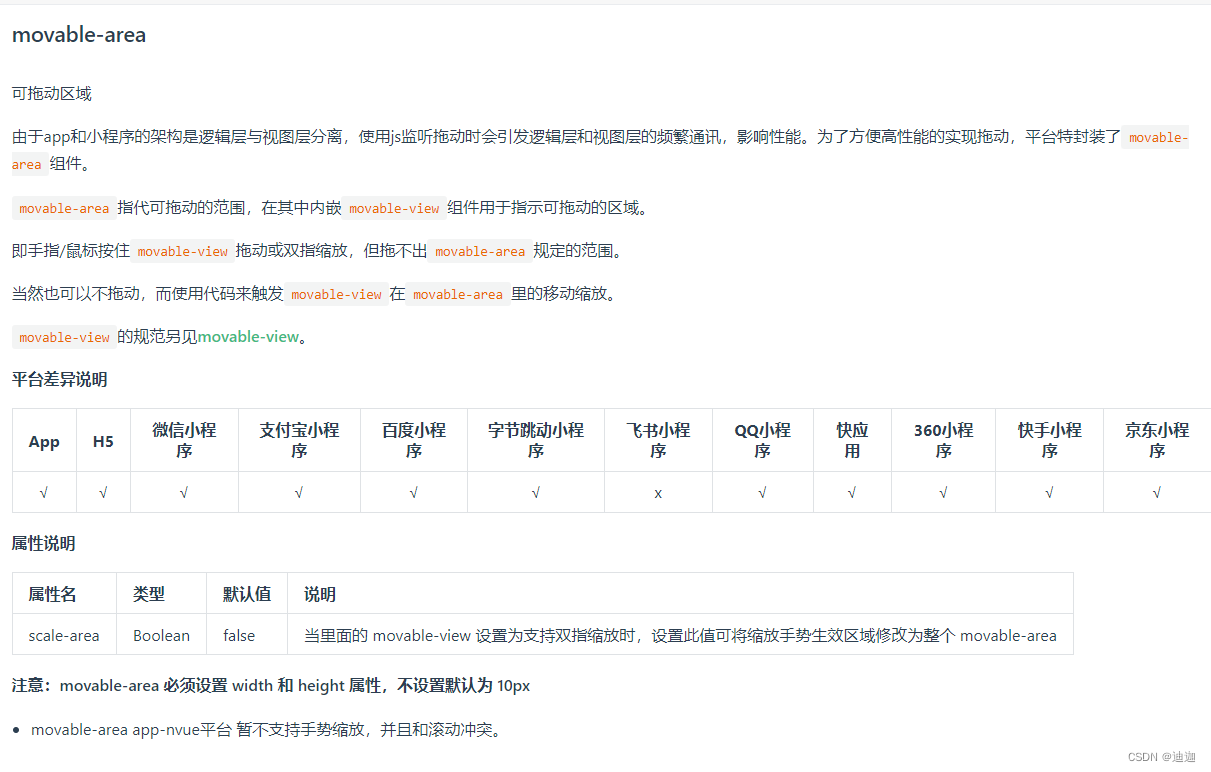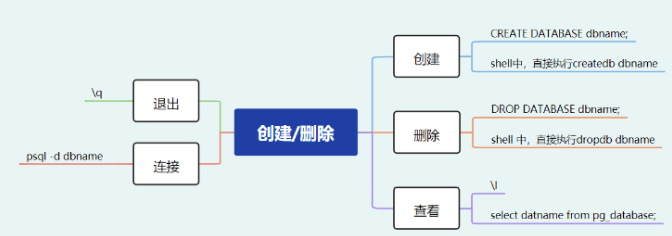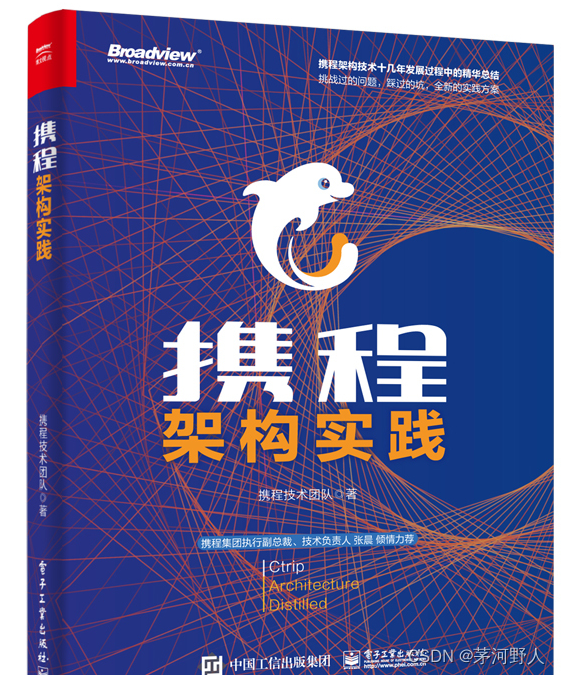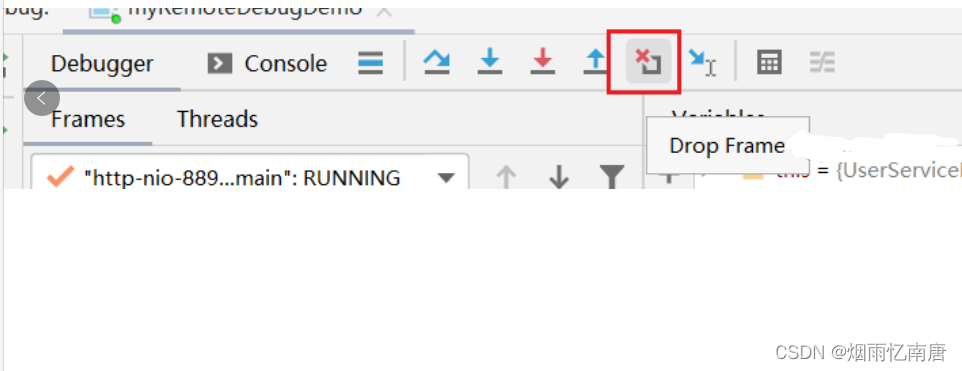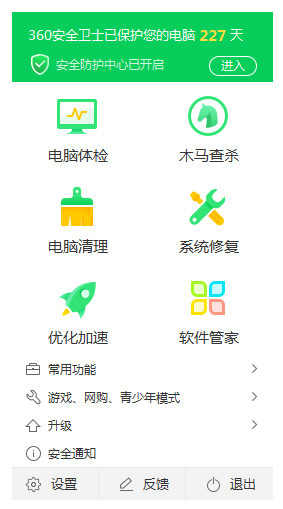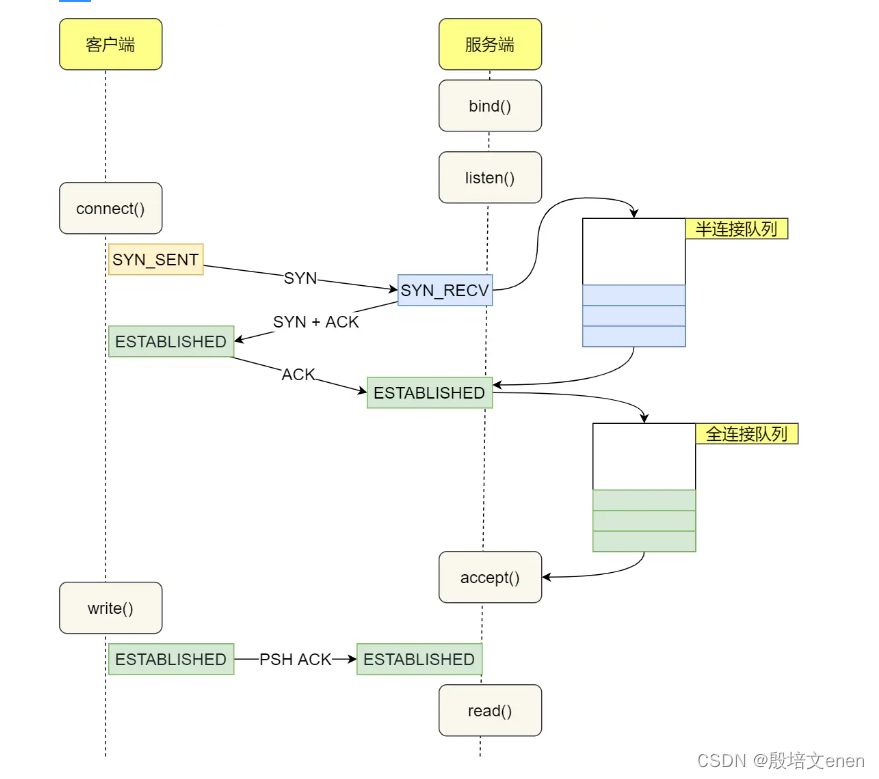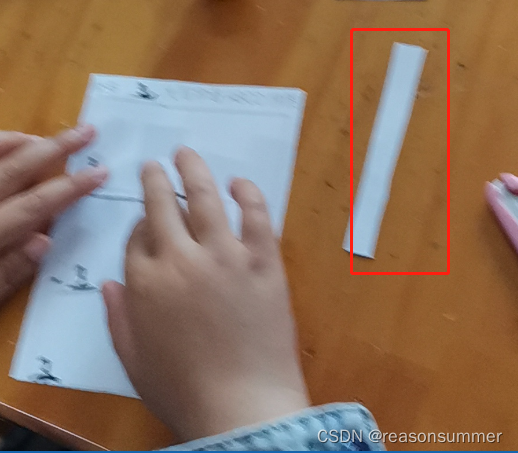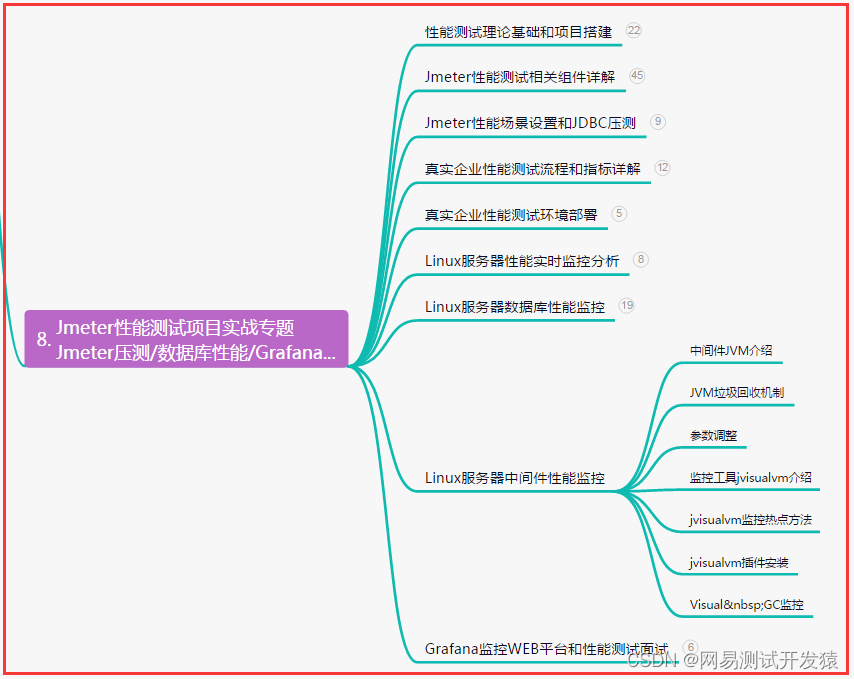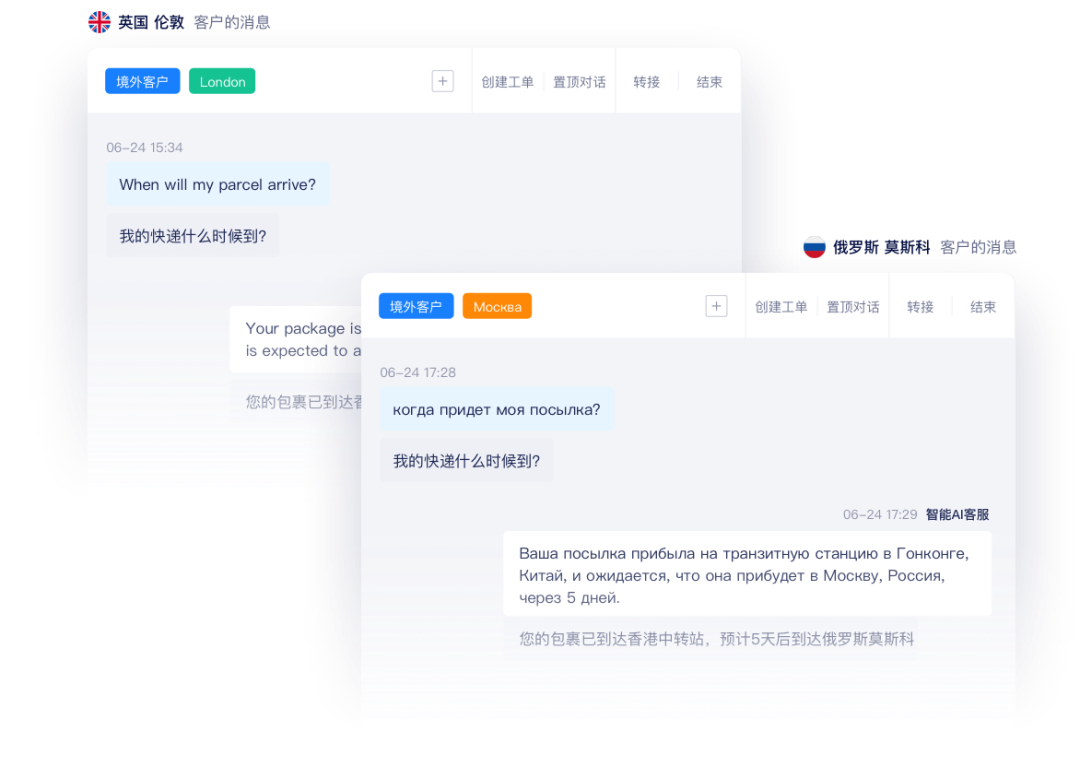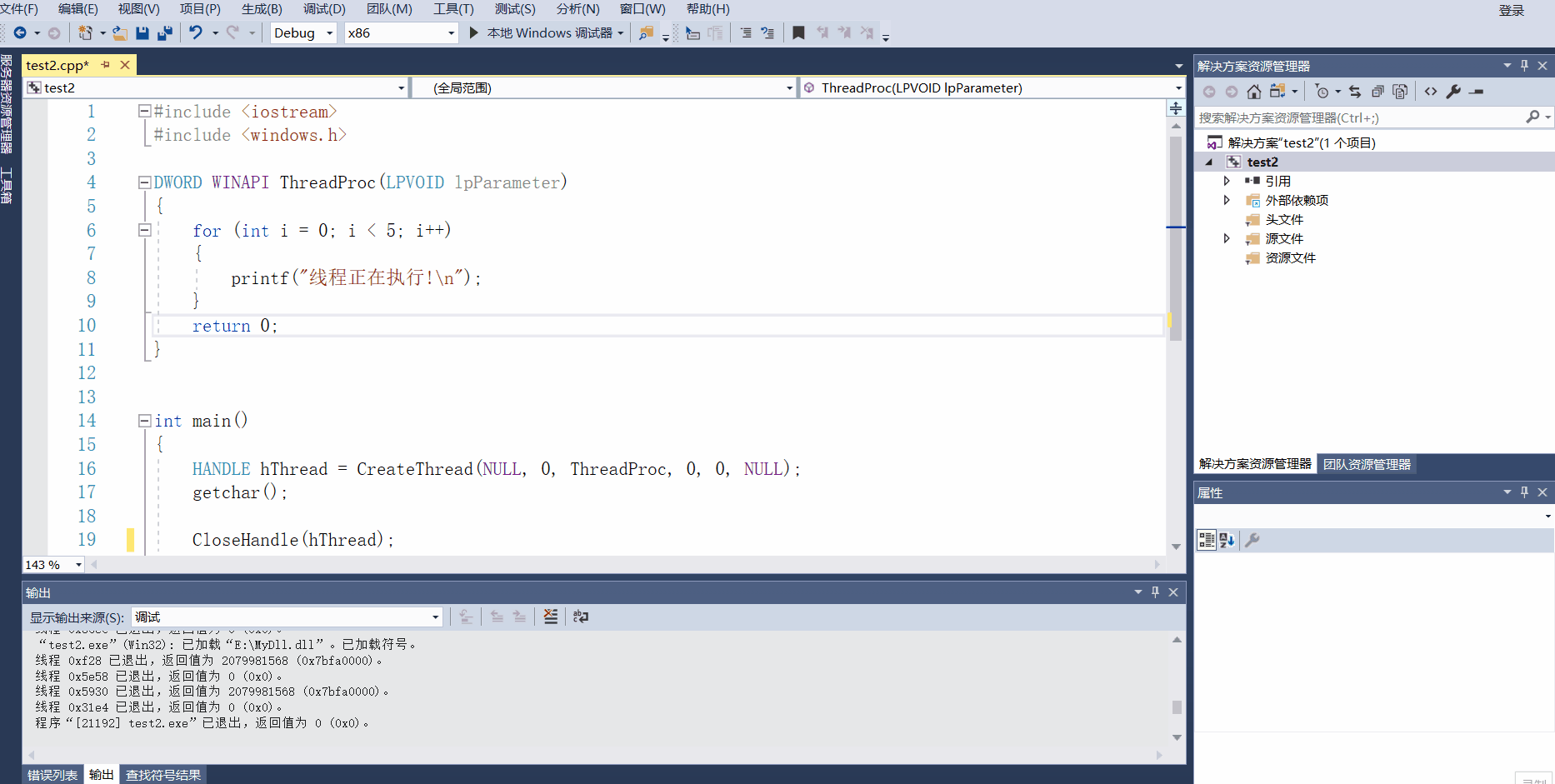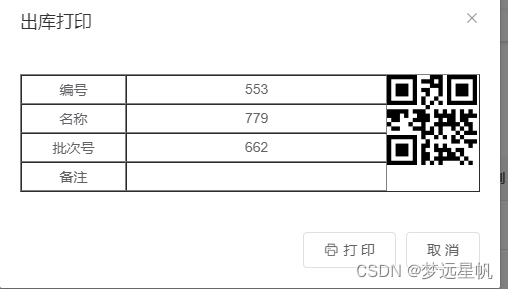- 文件就是保存数据的地方
- 文件流:文件在程序中是以流的形式来操作的
- java程序(内存)<-----输入流-----文件(磁盘,光盘等)
- java程序(内存)------输出流----->文件(磁盘)
- 流:数据在数据源(文件)和程序(内存)之间经历的路径
- 输入流:数据从数据源(文件)到程序(内存)的路径
- 输出流:数据从程序(内存)到数据源(文件)的路径
- 常用的文件操作
-
package com.jshedu.file; import org.junit.jupiter.api.Test; import java.io.*; /** * @author 韩顺平 * @version 1.0 * 演示创建文件 */ public class FileCreate { public static void main(String[] args) { } //方式1 new File(String pathname) @Test public void create01() { String filePath = "e:\\news1.txt"; File file = new File(filePath); try { file.createNewFile(); System.out.println("文件创建成功"); } catch (IOException e) { e.printStackTrace(); } } //方式2 new File(File parent,String child) //根据父目录文件+子路径构建 //e:\\news2.txt @Test public void create02() { File parentFile = new File("e:\\"); String fileName = "news2.txt"; //这里的file对象,在java程序中,只是一个对象 //只有执行了createNewFile 方法,才会真正的,在磁盘创建该文件 File file = new File(parentFile, fileName); try { file.createNewFile(); System.out.println("创建成功~"); } catch (IOException e) { e.printStackTrace(); } } //方式3 new File(String parent,String child) //根据父目录+子路径构建 //这种方式有可能创建多个子文件比较方便 @Test public void create03() { //String parentPath = "e:\\"; String parentPath = "e:\\"; String fileName = "news4.txt"; File file = new File(parentPath, fileName); try { file.createNewFile(); System.out.println("创建成功~"); } catch (IOException e) { e.printStackTrace(); } } //下面四个都是抽象类 // //InputStream //OutputStream //Reader //字符输入流 //Writer //字符输出流 }创建文件的3种方法
-
获取文件相关信息
package com.jshedu.file; import org.junit.jupiter.api.Test; import java.io.File; import java.io.IOException; /** * @author 韩顺平 * @version 1.0 */ public class FileInformation { public static void main(String[] args) { } //获取文件的信息 @Test public void info() { //先创建文件对象 File file = new File("d:\\news1.txt"); try { file.createNewFile();//注意这个命令否则没有在磁盘创建文件 } catch (IOException e) { e.printStackTrace(); } //调用相应的方法,得到对应信息 System.out.println("文件名字=" + file.getName()); //getName、getAbsolutePath、getParent、length、exists、isFile、isDirectory System.out.println("文件绝对路径=" + file.getAbsolutePath()); System.out.println("文件父级目录=" + file.getParent()); System.out.println("文件大小(字节)=" + file.length()); System.out.println("文件是否存在=" + file.exists());//T System.out.println("是不是一个文件=" + file.isFile());//T System.out.println("是不是一个目录=" + file.isDirectory());//F } }注意创建file.createNewFile();//注意这个命令否则没有在磁盘创建文件
-
目录操作
package com.jshedu.file; import org.junit.jupiter.api.Test; import java.io.File; import java.io.InputStream; import java.io.OutputStream; /** * @author 韩顺平 * @version 1.0 */ public class Directory_ { public static void main(String[] args) { // } //判断 d:\\news1.txt 是否存在,如果存在就删除 @Test public void m1() { String filePath = "e:\\news1.txt"; File file = new File(filePath); if (file.exists()) { if (file.delete()) { System.out.println(filePath + "删除成功"); } else { System.out.println(filePath + "删除失败"); } } else { System.out.println("该文件不存在..."); } } //判断 D:\\demo02 是否存在,存在就删除,否则提示不存在 //这里我们需要体会到,在java编程中,目录也被当做文件 @Test public void m2() { String filePath = "D:\\demo02"; File file = new File(filePath); if (file.exists()) { if (file.delete()) { System.out.println(filePath + "删除成功"); } else { System.out.println(filePath + "删除失败"); } } else { System.out.println("该目录不存在..."); } } //判断 D:\\demo\\a\\b\\c 目录是否存在,如果存在就提示已经存在,否则就创建 @Test public void m3() { String directoryPath = "D:\\demo\\a\\b\\c"; File file = new File(directoryPath); if (file.exists()) { System.out.println(directoryPath + "存在.."); } else { if (file.mkdirs()) { //创建一级目录使用mkdir() ,创建多级目录使用mkdirs() System.out.println(directoryPath + "创建成功.."); } else { System.out.println(directoryPath + "创建失败..."); } } } }注意创建文件File file = new File(filePath);
-
-
IO流原理及流的分类
-
I/O是Input/Output的缩写,I/O技术用于处理数据传输。如读/写文件,网页通讯
-
java程序中,对于数据的输入/输出操作以“流(stream)”的方式进行
-
java.io包下提供了各种“流”类和接口,用以获取不同种类的数据,并通过方法输入或输出数据
-
抽象类不能直接实例化,流(外卖小哥)不是数据是搬运数据的交通工具,文件就相当于物品(数据)
-
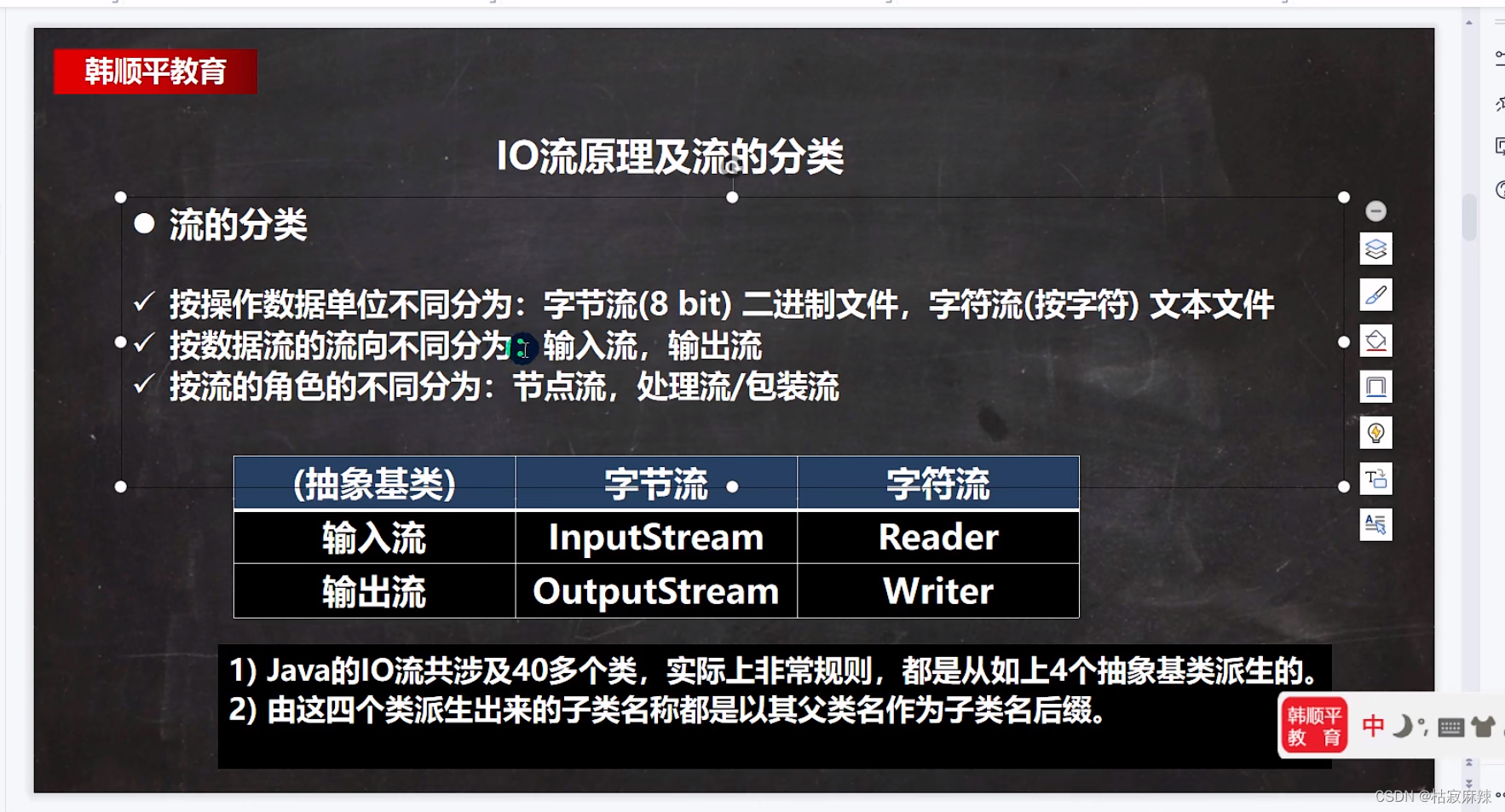
-
-
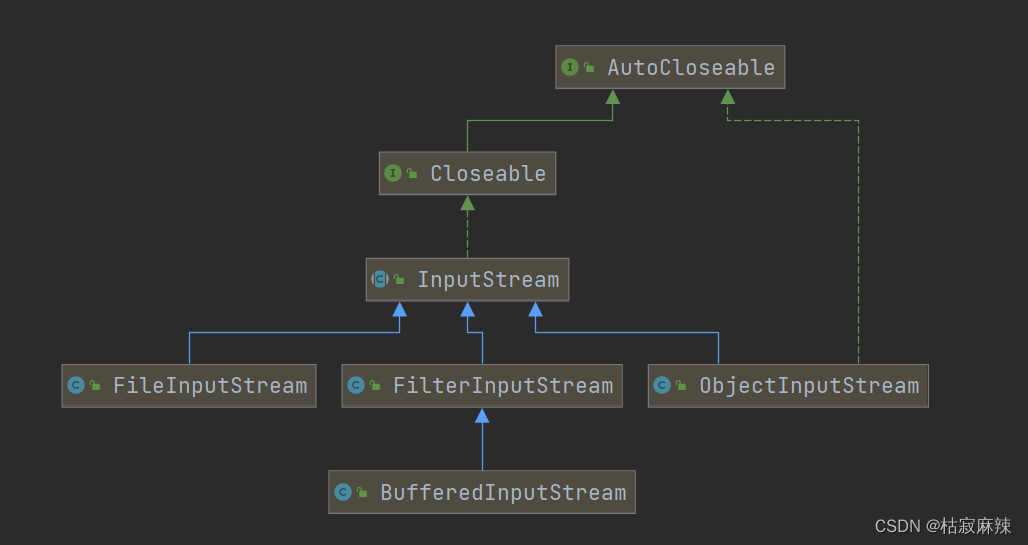
-
FileInputStream:用于读取诸如图像数据的原始字节流。
-
package com.hspedu.inputstream_; import org.junit.jupiter.api.Test; import java.io.FileInputStream; import java.io.FileNotFoundException; import java.io.IOException; /** * @author 韩顺平 * @version 1.0 * 演示FileInputStream的使用(字节输入流 文件--> 程序) */ public class FileInputStream_ { public static void main(String[] args) { } /** * 演示读取文件... * 单个字节的读取,效率比较低 * -> 使用 read(byte[] b) */ @Test public void readFile01() { String filePath = "e:\\hello.txt"; int readData = 0; FileInputStream fileInputStream = null; try { //创建 FileInputStream 对象,用于读取 文件 fileInputStream = new FileInputStream(filePath); //从该输入流读取一个字节的数据。 如果没有输入可用,此方法将阻止。 //如果返回-1 , 表示读取完毕 while ((readData = fileInputStream.read()) != -1) { System.out.print((char)readData);//转成char显示 } } catch (IOException e) { e.printStackTrace(); } finally { //关闭文件流,释放资源.因为流是用来运输数据的嘛 try { fileInputStream.close(); } catch (IOException e) { e.printStackTrace(); } } } /** * 使用 read(byte[] b) 读取文件,提高效率 */ @Test public void readFile02() { String filePath = "e:\\hello.txt"; //字节数组 byte[] buf = new byte[8]; //一次读取8个字节. int readLen = 0; FileInputStream fileInputStream = null; try { //创建 FileInputStream 对象,用于读取 文件 fileInputStream = new FileInputStream(filePath); //从该输入流读取最多b.length字节的数据到字节数组。 此方法将阻塞,直到某些输入可用。 //如果返回-1 , 表示读取完毕 //如果读取正常, 返回实际读取的字节数 //读入缓冲区的总字节数,如果没有更多的数据,因为文件的结尾已经到达,返回-1 。 while ((readLen = fileInputStream.read(buf)) != -1) { System.out.print(new String(buf, 0, readLen));//显示 } } catch (IOException e) { e.printStackTrace(); } finally { //关闭文件流,释放资源. try { fileInputStream.close(); } catch (IOException e) { e.printStackTrace(); } } } }使用 read(byte[] b) 读取文件,提高效率,返回读取了多少字节,最后一次返回-1
-
-
FileOutputStream
package com.hspedu.outputstream_; import org.junit.jupiter.api.Test; import java.io.FileNotFoundException; import java.io.FileOutputStream; import java.io.IOException; /** * @author 韩顺平 * @version 1.0 */ public class FileOutputStream01 { public static void main(String[] args) { } /** * 演示使用FileOutputStream 将数据写到文件中, * 如果该文件不存在,则创建该文件 */ @Test public void writeFile() { //创建 FileOutputStream对象 String filePath = "e:\\a.txt"; FileOutputStream fileOutputStream = null; try { //得到 FileOutputStream对象 对象 //老师说明 //1. new FileOutputStream(filePath) 创建方式,当写入内容是,会覆盖原来的内容 //2. new FileOutputStream(filePath, true) 创建方式,当写入内容是,是追加到文件后面 fileOutputStream = new FileOutputStream(filePath, true); //这里和创建文件那不一样,不用单独file.createNewFile(); //写入一个字节 //fileOutputStream.write('H');// //写入字符串 String str = "hsp,world!"; //str.getBytes() 可以把 字符串-> 字节数组 //fileOutputStream.write(str.getBytes()); /* write(byte[] b, int off, int len) 将 len字节从位于偏移量 off的指定字节数组写入此文件输出流 */ fileOutputStream.write(str.getBytes(), 0, 3); } catch (IOException e) { e.printStackTrace(); } finally { try { fileOutputStream.close();//关闭流 } catch (IOException e) { e.printStackTrace(); } } } }写入字符串的方法,覆盖和追加的方式
-
在完成程序时,应该是读取部分数据,就写入指定文件
package com.hspedu.outputstream_; import com.hspedu.inputstream_.FileInputStream_; import java.io.*; /** * @author 韩顺平 * @version 1.0 */ public class FileCopy { public static void main(String[] args) { //完成 文件拷贝,将 e:\\Koala.jpg 拷贝 c:\\ //思路分析 //1. 创建文件的输入流 , 将文件读入到程序 //2. 创建文件的输出流, 将读取到的文件数据,写入到指定的文件. String srcFilePath = "e:\\Koala.jpg"; String destFilePath = "e:\\Koala3.jpg"; FileInputStream fileInputStream = null; FileOutputStream fileOutputStream = null; try { fileInputStream = new FileInputStream(srcFilePath); fileOutputStream = new FileOutputStream(destFilePath); //定义一个字节数组,提高读取效果 byte[] buf = new byte[1024]; int readLen = 0; while ((readLen = fileInputStream.read(buf)) != -1) { //读取到后,就写入到文件 通过 fileOutputStream //即,是一边读,一边写 fileOutputStream.write(buf, 0, readLen);//一定要使用这个方法 } System.out.println("拷贝ok~"); } catch (IOException e) { e.printStackTrace(); } finally { try { //关闭输入流和输出流,释放资源 if (fileInputStream != null) { fileInputStream.close(); } if (fileOutputStream != null) { fileOutputStream.close(); } } catch (IOException e) { e.printStackTrace(); } } } }将文件读入java程序【输入流】,再从java程序将文件写入到指定的文件【输出流】
-
FileReader和FileWriter是字符流,即按照字符来操作io
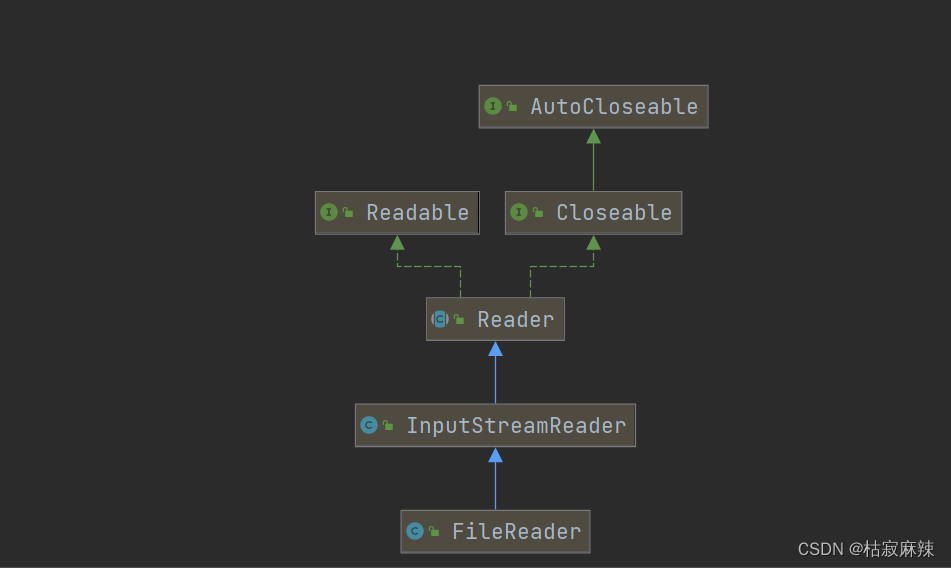
-
FileReader的两种读取方式
package com.jshedu.file; import org.junit.jupiter.api.Test; import java.io.FileNotFoundException; import java.io.FileReader; import java.io.FileWriter; import java.io.IOException; /** * @author 韩顺平 * @version 1.0 */ public class FileReader_ { public static void main(String[] args) { } /** * 单个字符读取文件 */ @Test public void readFile01() { String filePath = "e:\\story.txt"; FileReader fileReader = null; int data = 0; //1. 创建FileReader对象 try { fileReader = new FileReader(filePath); //循环读取 使用read, 单个字符读取 while ((data = fileReader.read()) != -1) { System.out.print((char) data); } } catch (IOException e) { e.printStackTrace(); } finally { try { if (fileReader != null) { fileReader.close(); } } catch (IOException e) { e.printStackTrace(); } } } /** * 字符数组读取文件 */ @Test public void readFile02() { System.out.println("~~~readFile02 ~~~"); String filePath = "e:\\story.txt"; FileReader fileReader = null; int readLen = 0; char[] buf = new char[8]; //1. 创建FileReader对象 try { fileReader = new FileReader(filePath); //循环读取 使用read(buf), 返回的是实际读取到的字符数 //如果返回-1, 说明到文件结束 while ((readLen = fileReader.read(buf)) != -1) { System.out.print(new String(buf, 0, readLen)); //这个位置和读取一个字符的地方不一样,String构造器,传入相应的参数 //把buf数组,从0开始读取readLen这么多的字符 } } catch (IOException e) { e.printStackTrace(); } finally { try { if (fileReader != null) { fileReader.close(); } } catch (IOException e) { e.printStackTrace(); } } } } -
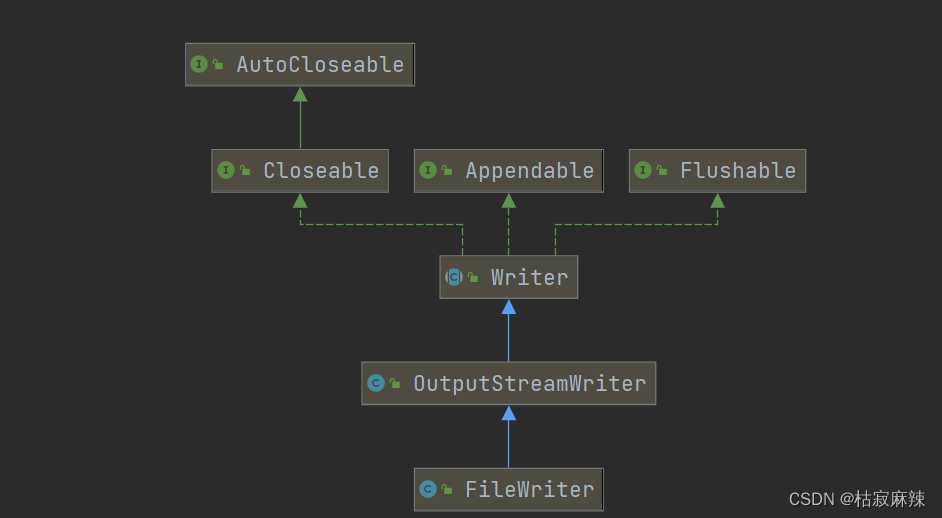
-
FileWriter案例
package com.jshedu.file; import java.io.FileWriter; import java.io.IOException; /** * @author 韩顺平 * @version 1.0 */ public class FileWriter_ { public static void main(String[] args) { String filePath = "d:\\note.txt"; //创建FileWriter对象 FileWriter fileWriter = null; char[] chars = {'a', 'b', 'c'}; try { fileWriter = new FileWriter(filePath);//默认是覆盖写入 //注意覆盖是还在fileWriter对象基础上操作write方法参数内容更改, //在执行就把上次执行的参数内容覆盖了。 // 3) write(int):写入单个字符 fileWriter.write('M'); // 4) write(char[]):写入指定数组 fileWriter.write(chars); // 5) write(char[],off,len):写入指定数组的指定部分 fileWriter.write("韩顺平教育".toCharArray(), 0, 3); // 6) write(string):写入整个字符串 fileWriter.write(" 你好北京~"); fileWriter.write("风雨之后,定见彩虹"); // 7) write(string,off,len):写入字符串的指定部分 fileWriter.write("上海天津", 0, 2); //在数据量大的情况下,可以使用循环操作. } catch (IOException e) { e.printStackTrace(); } finally { //对应FileWriter , 一定要关闭流,或者flush才能真正的把数据写入到文件 //老韩看源码就知道原因. /* 看看代码 private void writeBytes() throws IOException { this.bb.flip(); int var1 = this.bb.limit(); int var2 = this.bb.position(); assert var2 <= var1; int var3 = var2 <= var1 ? var1 - var2 : 0; if (var3 > 0) { if (this.ch != null) { assert this.ch.write(this.bb) == var3 : var3; } else { this.out.write(this.bb.array(), this.bb.arrayOffset() + var2, var3); } } this.bb.clear(); } */ try { //fileWriter.flush(); //关闭文件流,等价 flush() + 关闭 fileWriter.close(); } catch (IOException e) { e.printStackTrace(); } } System.out.println("程序结束..."); } }对应FileWriter , 一定要关闭流,或者flush才能真正的把数据写入到文件
文件,IO流,FileInputStream,FileOutputStream,FileReader和FileWriter是字符流
news2025/12/21 6:14:06
本文来自互联网用户投稿,该文观点仅代表作者本人,不代表本站立场。本站仅提供信息存储空间服务,不拥有所有权,不承担相关法律责任。如若转载,请注明出处:http://www.coloradmin.cn/o/439790.html
如若内容造成侵权/违法违规/事实不符,请联系多彩编程网进行投诉反馈,一经查实,立即删除!相关文章
用栈的思想实现将一个十进制数字转换为八进制--数据结构
魔王的介绍:😶🌫️一名双非本科大一小白。魔王的目标:🤯努力赶上周围卷王的脚步。魔王的主页:🔥🔥🔥大魔王.🔥🔥🔥 ❤️…
单点定位2米精度?这张卡差点干掉了RTK(内有轨迹对比图)
单点定位2米精度?现在的定位芯片卷成这样了?上面两张卡一款是主打高性能融合定位的星斗3,另一款是主打高性价比高精度低功耗的DNA-1,今天小编给两张定位卡做评测。
话不多说先上轨迹图: 这张图是我们拿着星斗3号RTK定…
小程序封装拖拽菜单组件(uniapp拖拽排序,自定义菜单)
效果展示 思路
使用movable-area作为可移动区域,并在内部循环渲染列表项view,绑定touch事件。在mounted生命周期函数内获取区域movable-area的dom信息,记录列表项的坐标信息。在methods中定义了列表项的touchstart、touchmove和touchend事件的方法,用于实现列表项的拖拽移动和…
偶数社区投稿丨OushuDB学习实践系列(一):开一家超市
大家好,我是镜镜呀,也是一名技术开发人员。本系列内容,也将由技术点出发,从数据库的使用、实践开始,逐步增加对整体的认知,由点及面,真正理解 OushuDB、数据湖仓一体在技术上的变革,…
@Configuration 和 @Component 注解的区别
一句话概括就是 Configuration 中所有带 Bean 注解的方法都会被动态代理,因此调用该方法返回的都是同一个实例。
理解:调用Configuration类中的Bean注解的方法,返回的是同一个示例;
而调用Component类中的Bean注解的方法&#x…
【社区图书馆】携程架构与实践图书
发这篇博文主要是想学习一下携程的架构。携程出了一本《携程架构实践》,无奈现在还没开源。看京东价大概109元人民币。如果看到次博文的网友能发我一本《携程架构实践》pdf。不胜感谢。或者实体书籍也行。其实我不怎么需要实体书籍,因为技术的东西很快会…
使用 IDEA 远程 Debug 调试
背景 有时候我们需要进行远程的debug,本文研究如何进行远程debug,以及使用 IDEA 远程debug的过程中的细节。看完可以解决你的一些疑惑。 配置 远程debug的服务,以springboot微服务为例。首先,启动springboot需要加上特定的参数。…
小白下载以后打不开怎么解决
我们重装系统时,大家会遇到各种各样的问题,现在有一些想用小白一键重装系统工具来帮助自己完成系统重装时,却发现我们打不开这个工具,现在不知道其原因有哪些,那么大家今天就来告诉小伙伴们小白一键重装官网下载以后打…
创新,阿里首发微服务实施手册我粉了,原来微服务还可以这样玩
微服务
相信大家在网上会看到很多帖子把分布式跟微服务放在一起讨论。确实,微服务就是一种分布式架构的设计方法。但是,在微服务概念还没有出现之前,分布式这个概念并不能引起人们的强烈关注,如果说自己擅长分布式架构设计&#…
TCP,TCP 连接建立,TCP 连接断开,Socket 编程
目录 TCP基本认识
TCP 头格式有哪些?
为什么需要 TCP 协议? TCP 工作在哪一层?
什么是 TCP ?
什么是 TCP 连接?
#如何唯一确定一个 TCP 连接呢?
UDP 和 TCP 有什么区别呢?分别的应用场景是…
【教学类-34-02】拼图(英文大写字母)3*2格子(中班主题《个别化拼图》偏艺术-美术)
作品展示: 背景需求
3*4块运动拼图对幼儿有点难(不熟悉图案内容、拼图数量多)
1、选择幼儿相对熟悉的的字母(26个,基本满足28人)
2、拼图数量:2*36块
3、做的小一点,一张2份&am…
【软件测试面试】全网最全,自动化测试面试题总结大全(付答案)
目录:导读 前言一、Python编程入门到精通二、接口自动化项目实战三、Web自动化项目实战四、App自动化项目实战五、一线大厂简历六、测试开发DevOps体系七、常用自动化测试工具八、JMeter性能测试九、总结(尾部小惊喜) 前言
面试题1ÿ…
企企通项目入选《2023爱分析·供应链和采购数字化最佳实践案例》
近日,“2023爱分析供应链和采购数字化最佳实践案例”评选活动落下帷幕,主要围绕实践领先性、案例创新性、应用成熟度、价值创造四个维度对候选实践案例进行评选。企企通凭借自身丰富的采购供应链解决方案经验,以“迈金科技采购数字化管理平台…
美洽迈入“生成式AI时代”,开启智能客服新纪元!
生成式 AI,当前科技领域最热门的话题之一。
它指的是一类人工智能模型,可以根据输入的数据,自动生成新的数据或者输出一些有用的信息,例如:文本、图像、音频、视频等等。
在实际应用中,生成式AI可以帮助人…
“COMSOL电化学系列,锂离子电池仿真,燃料电池仿真
背景:
电化学仿真技术通过对电池微观行为进行研究,明晰电池内部多现象机理,并将其数值化,通过数值方法实现对物理特征联合计算,建立完整的电池模型。COMSOL Multiphysics具有强大的多物理场全耦合仿真分析功能、高效的…
Django框架介绍及搭建开发环境
介绍
是一个开放源代码的web应用框架,由python编写。
与常规的MVC架构不同,为MTV架构。 MTV
Model(模型):负责业务对象和数据库的关系映射(ORM)。
Template(视图):负责把页面展示给用户(htm…
Win32API之实现远程线程注入(九)
什么是注入
注入是一种在不知情或未经许可的情况下向其他进程中注入模块并试图执行它们的技术
常见的注入方式有:远程线程注入、APC注入、消息钩子注入、注册表注入、导入表注入、输入法注入等等 什么是远程线程注入
远程线程注入是一种技术,可以将一…
前端vue之根据内容生成二维码
1.实现这功能需要借助第三方插件,首先下载安装插件:
我在终端直接下载
npm install vue-qr --save2.在需要的.vue文件中引入并注册组件
import VueQr from vue-qr;
export default {components: {VueQr,},3.在需要用的位置使用该二维码标签 <vue-qr :logo-src"logoS…
自动控制原理模拟卷6
自动控制原理模拟题六 Question1
已知控制系统的信号流图如下图所示: 求控制系统传递函数 C ( s ) / R ( s ) C(s)/R(s) C(s)

